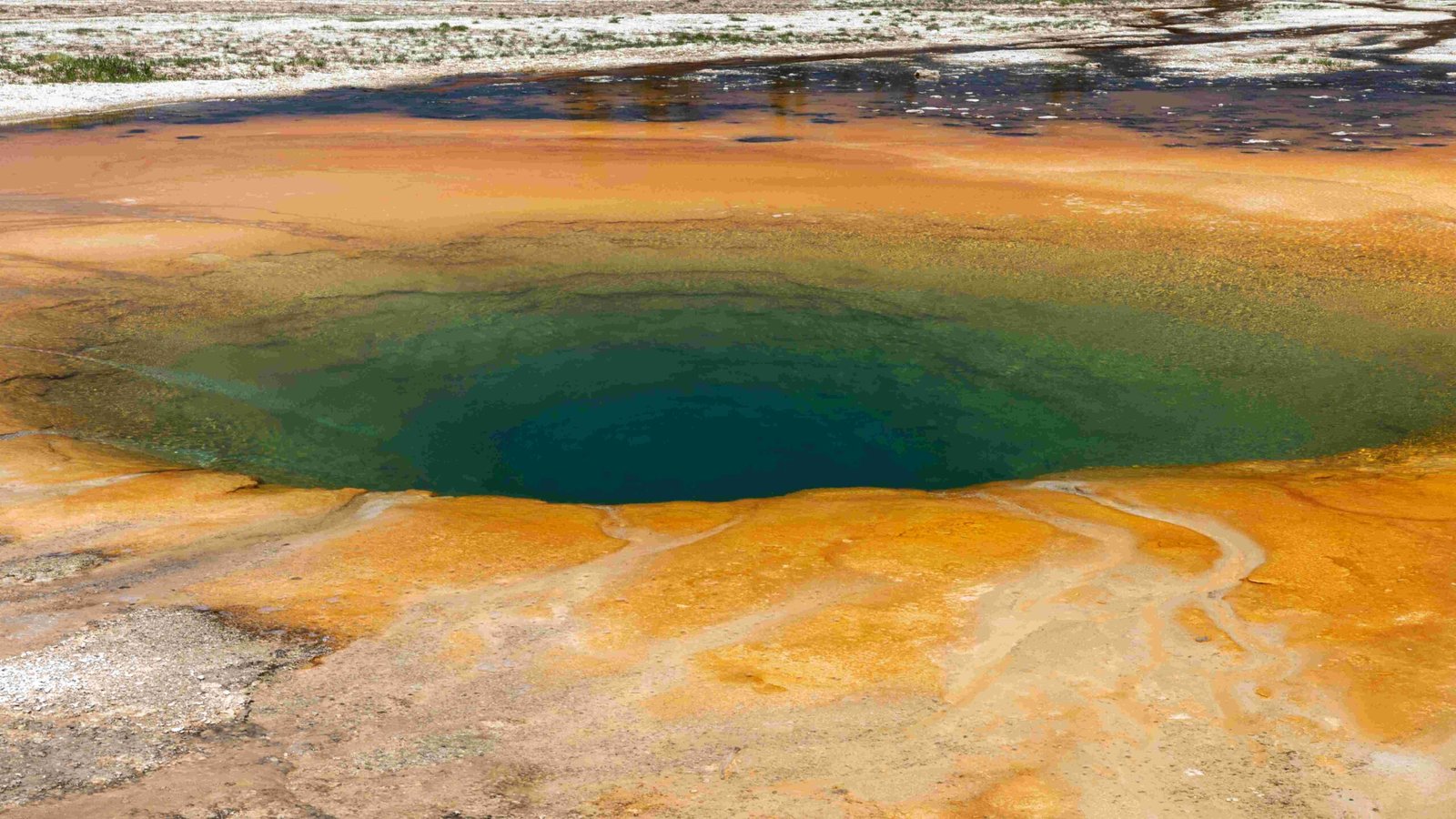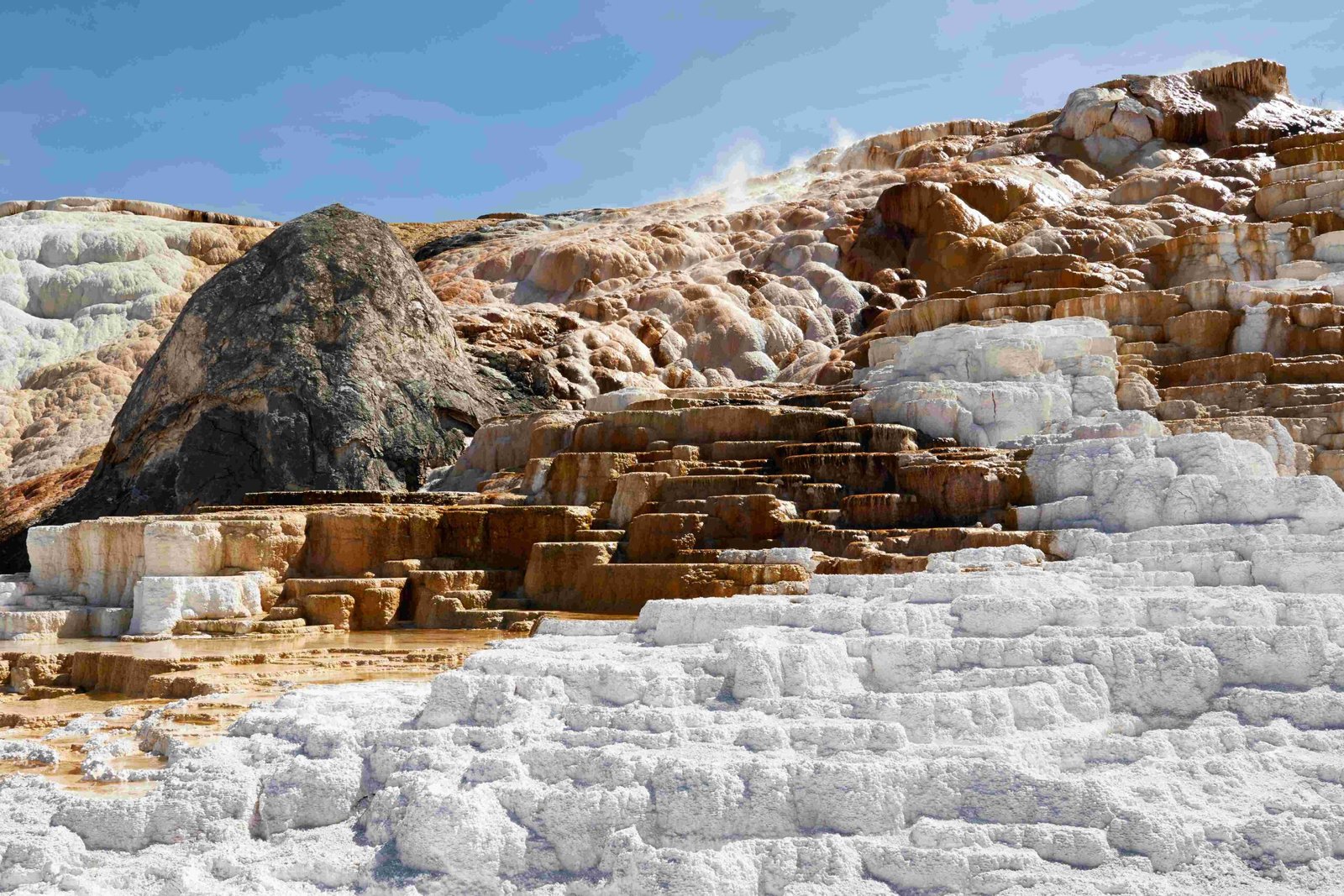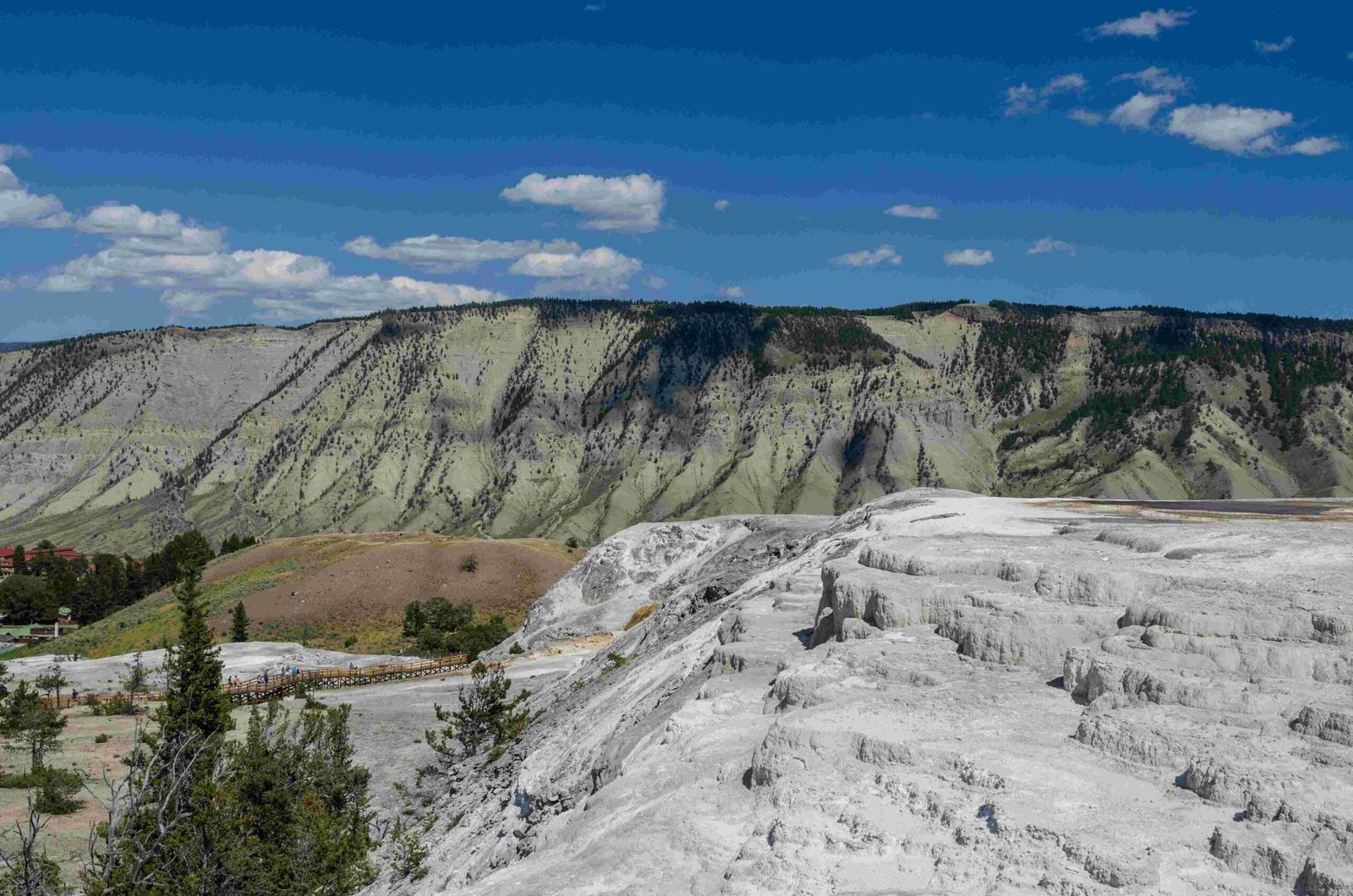Canary Springs, located in the Mammoth Hot Springs area of Yellowstone National Park, is a stunning geothermal feature known for its vibrant colors and unique travertine formations. This natural wonder showcases the park’s dynamic geology, with hot water rich in calcium carbonate creating ever-changing terraces. Visitors can explore the area via boardwalks, witnessing the interplay of heat, water, limestone, and microorganisms that make Canary Springs a must-see destination in Yellowstone.
What are the Key Features of Canary Springs?

Canary Springs boasts several distinctive characteristics that set it apart from other geothermal features in Yellowstone National Park:
- Vibrant colors: The springs display a palette of hues, ranging from whites to oranges and browns.
- Travertine terraces: Formed by mineral deposits, these step-like formations create a unique landscape.
- Constant change: The flow of water and mineral deposition continuously reshape the springs’ appearance.
- Thermophilic microorganisms: These heat-loving bacteria and algae contribute to the colorful display.
How Hot is the Water at Canary Springs?

The water at Canary Springs emerges at approximately 170°F (80°C). This high temperature is crucial for the geothermal processes that create and maintain the springs:
- Origin: The water originates from the Norris Geyser Basin, traveling underground through a fault line.
- Cooling process: As it surfaces, the water cools slightly, allowing for mineral deposition.
- Temperature variation: Different areas of the springs may have varying temperatures due to cooling and mixing with surface water.
What Causes the Unique Colors at Canary Springs?
The striking colors observed at Canary Springs result from a combination of factors:
- Mineral deposits: The white color comes from travertine, a form of limestone.
- Thermophilic bacteria: Different species thrive at various temperatures, creating bands of color.
- Algae: Certain types of algae contribute to the green and brown hues.
- Water depth: Shallow areas may appear different from deeper pools due to light refraction.
| Color | Primary Cause |
|---|---|
| White | Travertine deposits |
| Orange/Yellow | Bacteria and minerals |
| Green | Algae |
| Brown | Mix of bacteria and minerals |
How Can Visitors Access Canary Springs?
Accessing Canary Springs is relatively straightforward for most visitors:
- Upper Terrace Drive: A one-way road suitable for small vehicles leads to the area.
- Parking: The closest lot is about 2.2 miles south of Mammoth Junction.
- Boardwalks: A network of elevated paths allows for close-up viewing of the springs.
- Accessibility: Wheelchair-accessible trails are available for visitors with mobility challenges.
What are the Best Times to Photograph Canary Springs?
For photographers looking to capture the beauty of Canary Springs, timing is crucial:
- Early morning: Soft light enhances colors without harsh shadows.
- Late afternoon: Golden hour provides warm tones and dramatic lighting.
- Overcast days: Diffused light can help capture the true colors of the springs.
Avoid midday sun, which can create glare and wash out the vibrant hues of the springs.
What Camera Settings Work Best for Canary Springs Photos?
To capture the essence of Canary Springs, consider these photography tips:
- Use a polarizing filter to reduce glare from water surfaces.
- Shoot in RAW format for maximum post-processing flexibility.
- Adjust white balance to match the lighting conditions (e.g., cloudy or shade settings).
- Experiment with different apertures to balance depth of field and sharpness.
- Consider using HDR techniques for high-contrast scenes.
Are There Guided Tours Available at Canary Springs?
While specific tours may vary, Yellowstone National Park often offers educational programs near Canary Springs:
- Ranger-led walks: Learn about the geology and ecology of the area.
- Educational talks: Gain insights into the park’s geothermal features.
- Self-guided tours: Use park-provided materials to explore at your own pace.
Check with the Mammoth Hot Springs Visitor Center for current schedules and availability.
What Amenities are Available Near Canary Springs?
Visitors to Canary Springs can take advantage of several nearby facilities:
- Restrooms: Located near main parking areas and the Mammoth Hot Springs Historic District.
- Picnic areas: Enjoy a meal with a view of the surrounding landscape.
- General store: Stock up on supplies or souvenirs.
- Lodging: Accommodations are available within the Mammoth Hot Springs area.
- Gas station: Refuel before exploring other parts of the park.
How Does Canary Springs Change Throughout the Year?
Canary Springs exhibits seasonal variations that can affect visitor experiences:
- Spring: Increased water flow from snowmelt can enhance the vibrancy of colors.
- Summer: Peak visitation season with optimal weather for exploring.
- Fall: Cooler temperatures and changing foliage provide a unique backdrop.
- Winter: Snow-covered terraces offer a stark contrast to the steaming springs.
Note that while the springs are accessible year-round, winter visits may require special transportation arrangements.
What Safety Precautions Should Visitors Take at Canary Springs?
When visiting Canary Springs, keep these safety tips in mind:
- Stay on designated boardwalks and trails at all times.
- Do not touch or enter the hot springs – the water can cause severe burns.
- Keep a safe distance from wildlife – do not approach or feed animals.
- Carry plenty of water, especially during summer months.
- Be aware of high altitude effects and take breaks if needed.
By following these guidelines, visitors can safely enjoy the natural wonders of Canary Springs and contribute to the preservation of this unique ecosystem within Yellowstone National Park.

